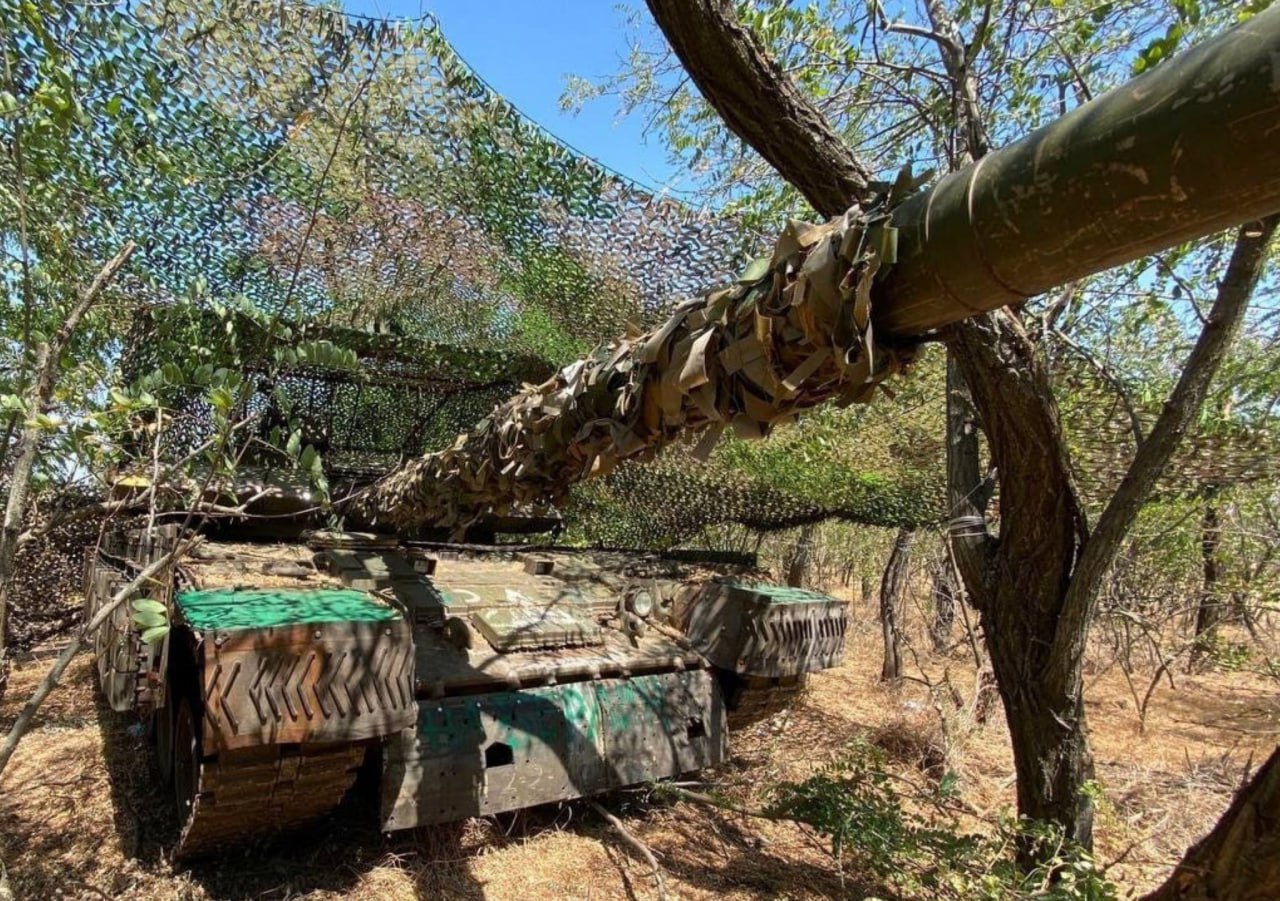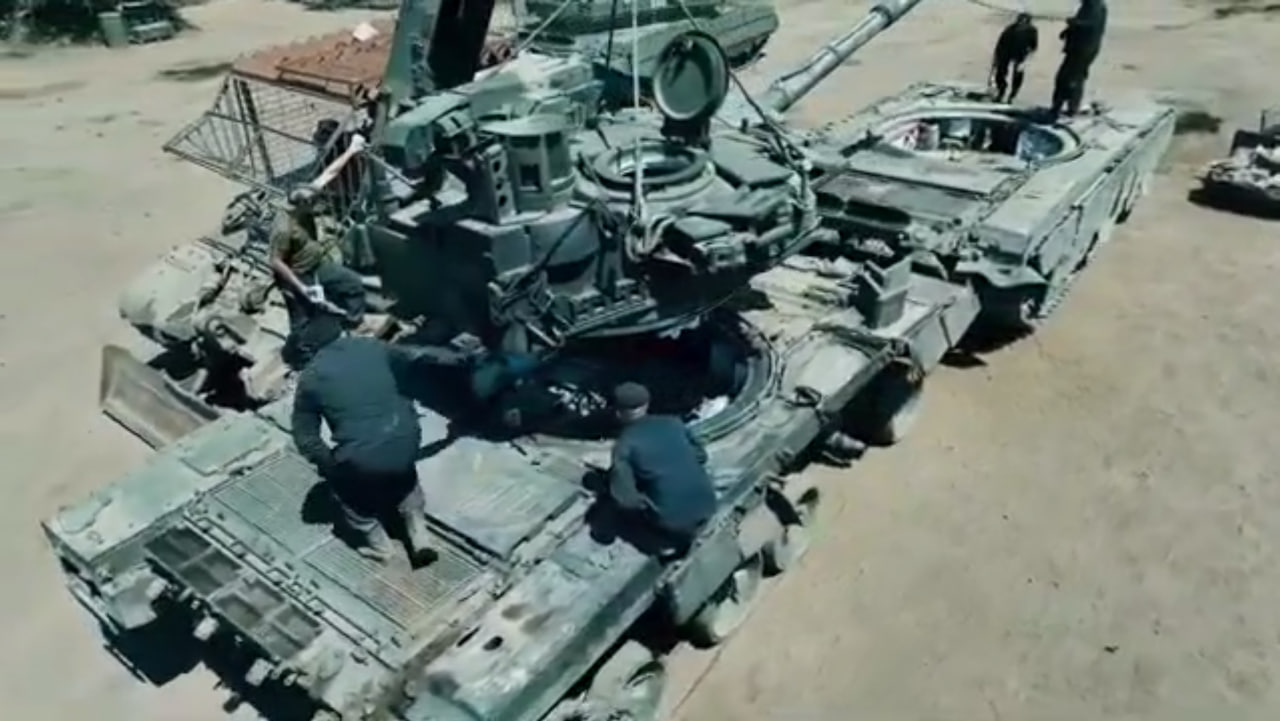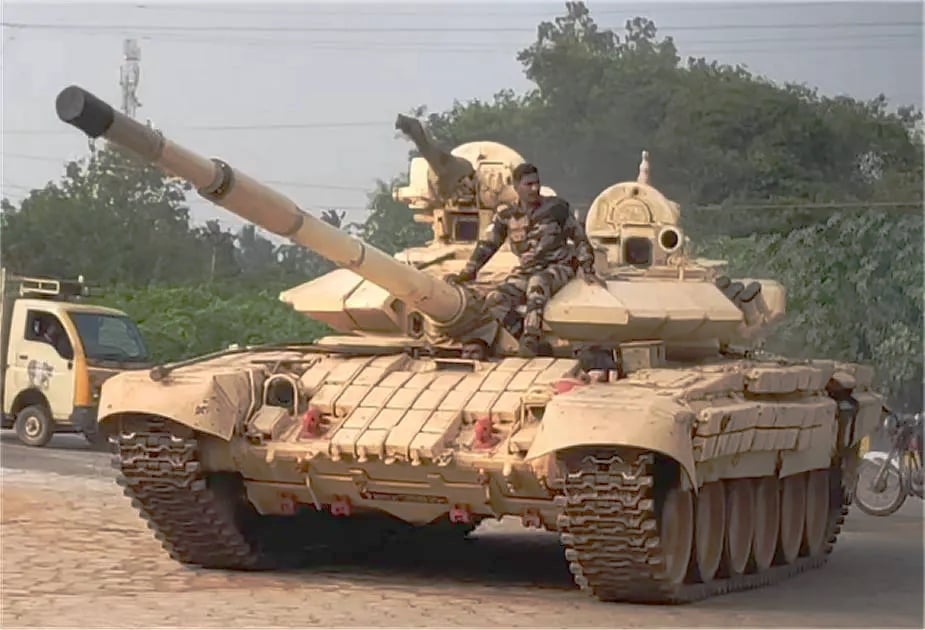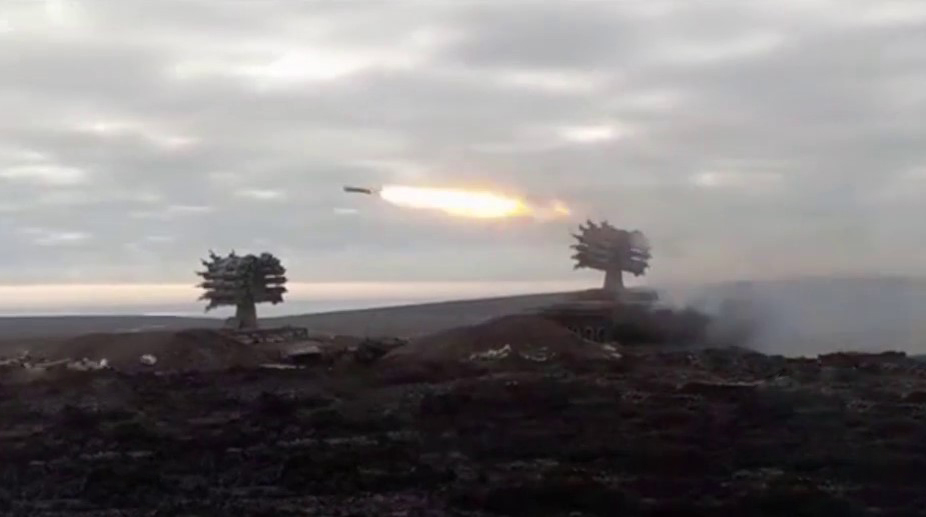What’s the Purpose of Combining T-90 Turret With T-80 Chassis and What Kind of Trend in russia It Reveals
Quite an interesting armored combat unit has emerged on Ukrainian frontlines in the hands of the russian invasion forces. The soldiers attached a turret stripped from a T-90A main battle tank to the body of a T-80BVK. The protection of the resulting vehicle was reinforced with robust screens and explosive reactive armor tiles.
Several photos of this unique hybrid of two tanks were published by the btvt_2019 community, the time and place where the photographs were taken are not specified.

What’s particularly notable about this episode is that it’s illustrative of the improvised solutions employed by russian forces. Specifically, to get around the limitations associated with restoring equipment damaged in battle and / or restocked from long-term mothballing: they simply blend elements of two remotely similar armored units. The result is usually a vehicle with questionable performance characteristics, and repairing it is a puzzle for any field technician, yet it’s capable of performing basic tasks to accomplish a mission.
For another example, there was a case from September 2024, also pointed out by btvt_2019, where a russian repair team assembled a new combat-capable tank using two damaged T-90s. One had only the chassis remaining functional, while the other just the turret. The whole process was filmed by a russian military blogger. The author of the footage said this operation was carried out right in the open, using the available field repair equipment.

The very idea of putting a turret from one tank on the chassis of another is not a know-how in itself. In January 2024, for instance, India “retrofitted” the T-72 tank by integrating a T-90 turret, to get a vehicle with impaired mobility yet increased firepower, situational awareness, and protection. The hybrid was named Atharva, the main problem was that while the weight grew to a total of 45.8 tons, 2 tons up from the standard T-72, the developers kept the same power plant which struggled to tow a heavier vehicle, especially in rough terrain.

But as far as russian T-80s are concerned, we should recall the episode from January 2024, when the russians mounted RBU-6000 naval rocket launchers on the chassis of this tank. These improvised MLR systems had objective drawbacks but they were at least functional.

Similarly to our current case, the main driving force of such modifications was most likely the dysfunctional armament on the T-80 tanks that one way or another happened to be available at their disposal.
This brings us to the observed systematic problems encountered by russia when putting mothballed T-80 tanks back to service. Issues with armament systems topped the list of malfunctions recorded during the inspection of the tanks retrieved from long-term storage.

